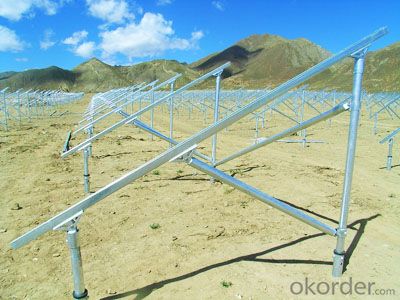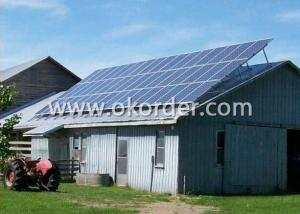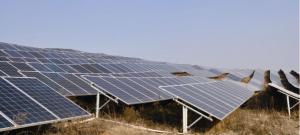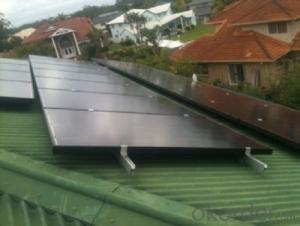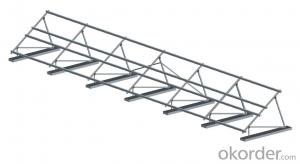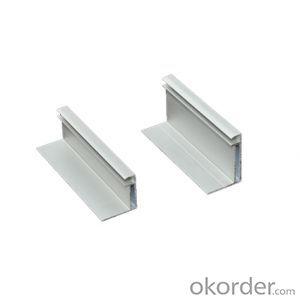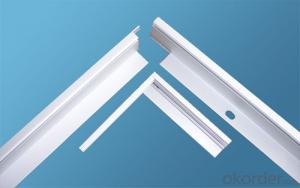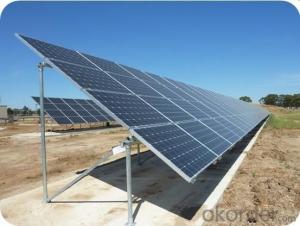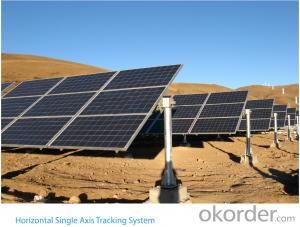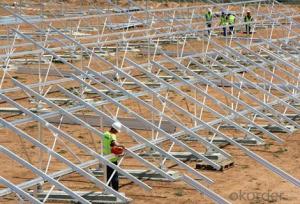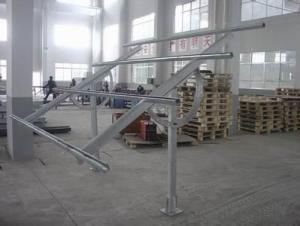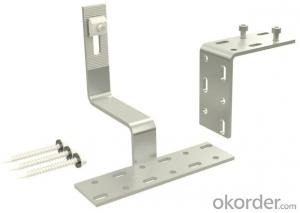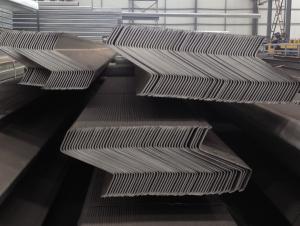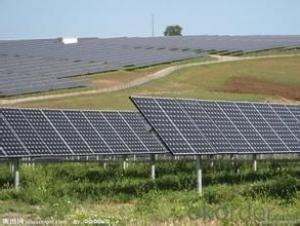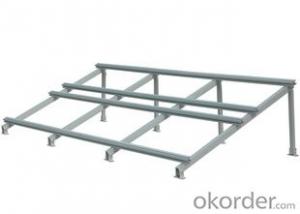Ballast Solar Mounting System TT-DR2
- Loading Port:
- Shanghai
- Payment Terms:
- TT OR LC
- Min Order Qty:
- -
- Supply Capability:
- 50万套 set/month
OKorder Service Pledge
OKorder Financial Service
You Might Also Like
PV Mounting brackets are special solar photovoltaic systemfor placing, installing, fixing the solar panel design. Generally materials arealuminum, steel structure, stainless steel. PV mounting products at groundmounting system, flat roof mounting system, adjustable angle roof rack system,inclined roof rack system, column bracket system.
The Ground Mounting System including concret basement sysytemand steel pipe sysytem, Titanergy provides total solution for flat or pitchedroof with patent products.On the basis of the given project data, specificnational standards and guidelines, Titanergy will calculate the completestructural analysis and create a complete project plan to make sure reliablestructural safety.We provide high quality HDG steel and aluminum products forthe ground mounting sysytem,witch can make sure the security and durability ofthe project.
Features and Advantages
n The rail bracket is easy to install, just use simple tools(eg, Allen wrench) can be easily installed. Rail connecting member can freelyadjust the length, the stent may be pre-installed on the roof, and thenappropriately adjusted according to the size of the solar panel.
n The combination of strong, aluminum rails and card blocks fora variety of venues and a variety of materials roofs (such as metal, ceramicand other kinds of tile surface)
n Component compatibility, and rail can meet PV modules fromdifferent manufacturers.
n accuracy, the length of the rail to the nearest millimeter,the construction process, not because of the length is too long or too shortfor the second cut.
n flexible assembly, rail hooks can adjust the spacing modulearray and tile has been installed successfully address the uneven roofconstruction led to difficult problems.
n design standards, product design and development process instrict accordance with GB, the German standards and other internationalstandards to ensure products reach the world advanced level.
n Quality assurance, the stent main material is high-qualityaluminum and stainless steel, effectively prevent corrosion of oxidation.Products can be recycled, reducing environmental pollution.
n Carried out strictly according to the current specificnational standards
n Perfectly optimized components and complete structuralanalysis for the sysytem
n High corrosion resisitance ensure the stability and highdurability
n Total test and certification make sure the high quality ofthe products
n Maximum pre-assembled in factory,quick mounting onsite,timesaving
10-year durability warranty
Technical Data
n Design Period:25 years
n Installation Site: Open area
n Array Angle:10°~60°
n ModuleType:Framed or unframed
n Material:Q235B,Al 6063-T5,Al 6005-T5,StainlessSteel A2-70
n Coating:HDG/Anodised
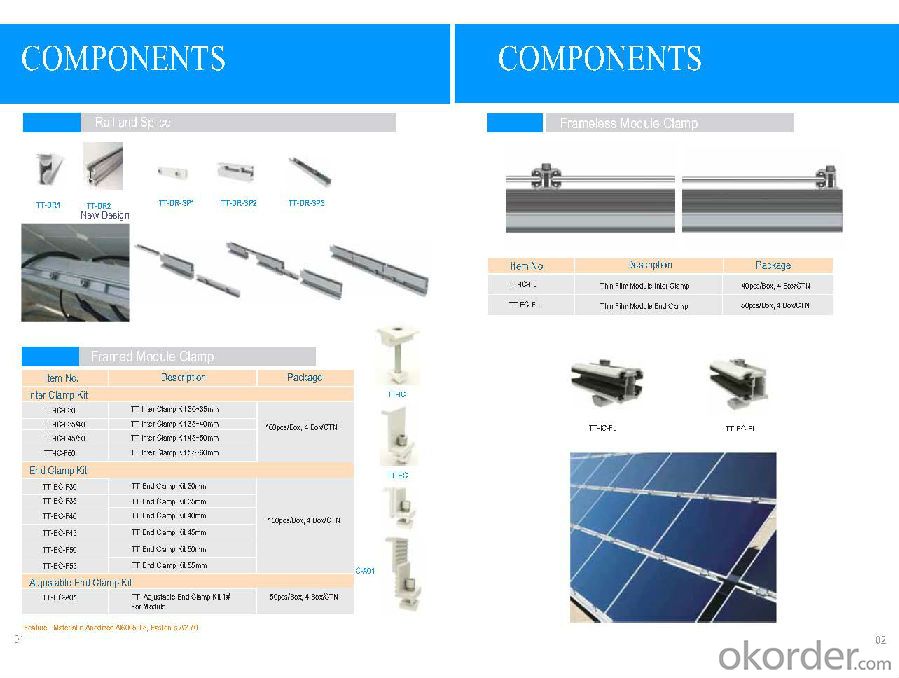

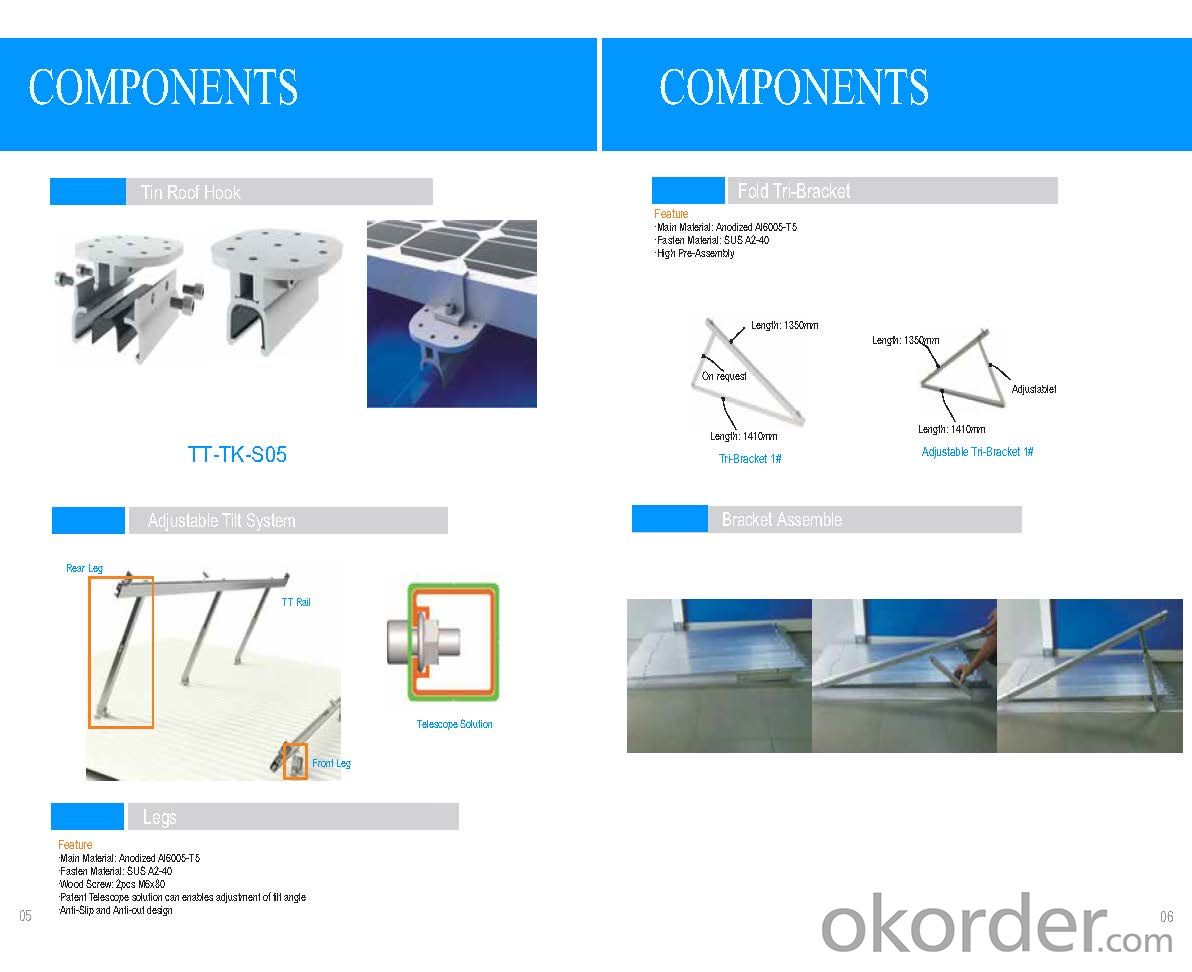
- Q: Are there any height limitations for solar mounting systems?
- Yes, there are height limitations for solar mounting systems. The maximum height will vary depending on various factors such as the specific design of the mounting system, wind load requirements, and local building codes. It is important to consult with a professional engineer or the manufacturer of the mounting system to ensure compliance with the appropriate height limitations and safety standards.
- Q: Specification for installation of fire pipe support
- The size and type of the bracket should be based on the actual situation to determine the stent hole should be used to open the hole drilling, is strictly prohibited to use electricity, gas welding openings.
- Q: Can solar mounting systems be installed on buildings with limited roof weight capacity?
- Yes, solar mounting systems can be installed on buildings with limited roof weight capacity. There are lightweight and low-profile solar mounting systems available in the market that are specifically designed to minimize the added load on the roof. These systems distribute the weight of the solar panels evenly and make use of innovative installation techniques to ensure the structural integrity of the building is maintained. Additionally, a structural engineering analysis can be conducted to determine the maximum weight capacity of the roof and design a solar mounting system that complies with these requirements.
- Q: Are there any maintenance requirements for solar mounting systems?
- Yes, solar mounting systems require regular maintenance to ensure their optimal performance and longevity. This typically involves inspecting the system for any damage or loose components, cleaning the panels and racking to remove dirt and debris, and checking the system's alignment and stability. Additionally, it is important to monitor the system's electrical connections and wiring to identify any potential issues. Regular maintenance helps prevent efficiency losses and ensures the system operates effectively over its lifespan.
- Q: Can a solar mounting system be installed on a desert or arid region?
- Yes, a solar mounting system can be installed on a desert or arid region. In fact, these regions are often ideal for solar installations due to the high levels of sunlight they receive. The lack of vegetation and relatively flat terrain make it easier to design and install solar arrays, maximizing their efficiency. Additionally, the dry climate helps to reduce maintenance and cleaning requirements for the system.
- Q: Is the template and stent two or one?
- The requirements of the stent support: stable, will not be displaced due to pouring and vibrating, bearing capacity, can support the weight of the board after pouring, and demolition of all the pouring parts on the load, safe, will not collapse, or fall Wounding.
- Q: Are there any warranty options available for solar mounting systems?
- Yes, there are warranty options available for solar mounting systems. Many reputable manufacturers offer warranties ranging from 10 to 25 years, ensuring the quality and durability of the system. It is important to carefully review the warranty terms and conditions to fully understand the coverage and any limitations.
- Q: Are there any specific requirements for installing a solar mounting system?
- Yes, there are specific requirements for installing a solar mounting system. These typically include factors such as the type and size of the solar panels, the weight and wind load capacity of the mounting system, the structural integrity of the roof or ground where the system will be installed, and compliance with local building codes and regulations. Additionally, proper orientation and positioning of the solar panels to maximize sunlight exposure is essential for optimal performance. It is advisable to consult with a professional installer or engineer to ensure all requirements are met for a safe and efficient installation.
- Q: Which type of solar mounting system is best for residential installations?
- The best type of solar mounting system for residential installations is typically the rooftop mounting system.
- Q: Can a solar mounting system be installed on a rooftop with a pyramid roof?
- Yes, a solar mounting system can be installed on a rooftop with a pyramid roof. The specific design and installation process may vary depending on the structure and slope of the pyramid roof, but with the right expertise and equipment, it is possible to mount solar panels on such roofs.
Send your message to us
Ballast Solar Mounting System TT-DR2
- Loading Port:
- Shanghai
- Payment Terms:
- TT OR LC
- Min Order Qty:
- -
- Supply Capability:
- 50万套 set/month
OKorder Service Pledge
OKorder Financial Service
Similar products
Hot products
Hot Searches
Related keywords

